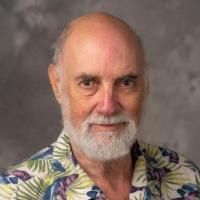Redefine statistical significance
Date
2017-09-03
Journal Title
Journal ISSN
Volume Title
Repository Usage Stats
views
downloads
Citation Stats
Attention Stats
Abstract
Type
Department
Description
Provenance
Subjects
Citation
Permalink
Published Version (Please cite this version)
Publication Info
Benjamin, Daniel J, James O Berger, Magnus Johannesson, Brian A Nosek, E-J Wagenmakers, Richard Berk, Kenneth A Bollen, Björn Brembs, et al. (2017). Redefine statistical significance. Nature Human Behaviour. 10.1038/s41562-017-0189-z Retrieved from https://hdl.handle.net/10161/15438.
This is constructed from limited available data and may be imprecise. To cite this article, please review & use the official citation provided by the journal.
Collections
Scholars@Duke

James O. Berger

Merlise Clyde
Model uncertainty and choice in prediction and variable selection problems for linear, generalized linear models and multivariate models. Bayesian Model Averaging. Prior distributions for model selection and model averaging. Wavelets and adaptive kernel non-parametric function estimation. Spatial statistics. Experimental design for nonlinear models. Applications in proteomics, bioinformatics, astro-statistics, air pollution and health effects, and environmental sciences.

Robert L. Wolpert
I'm a stochastic modeler-- I build computer-resident mathematical models
for complex systems, and invent and program numerical algorithms for making
inference from the models. Usually this involves predicting things that
haven't been measured (yet). Always it involves managing uncertainty and
making good decisions when some of the information we'd need to be fully
comfortable in our decision-making is unknown.
Originally trained as a mathematician specializing in probability theory and
stochastic processes, I was drawn to statistics by the interplay between
theoretical and applied research- with new applications suggesting what
statistical areas need theoretical development, and advances in theory and
methodology suggesting what applications were becoming practical and so
interesting. Through all of my statistical interests (theoretical, applied,
and methodological) runs the unifying theme of the Likelihood Principle,
a constant aid in the search for sensible methods of inference in complex
statistical problems where commonly-used methods seem unsuitable.
Three specific examples of such areas are:
- Computer modeling, the construction and analysis of fast small Bayesian
statistical emulators for big slow simulation models; - Meta-analysis, of how we can synthesize evidence of different sorts about
a statistical problem; and - Nonparametric Bayesian analysis, for applications in which common
parametric families of distributions seem unsuitable.
Many of the methods in common use in each of these areas are hard or
impossible to justify, and can lead to very odd inferences that seem to
misrepresent the statistical evidence. Many of the newer approaches
abandon the ``iid'' paradigm in order to reflect patterns of regional
variation, and abandon familiar (e.g. Gaussian) distributions in order to
reflect the heavier tails observed in realistic data, and nearly all of
them depend on recent advances in the power of computer hardware and
algorithms, leading to three other areas of interest:
- Spatial Statistics,
- Statistical Extremes, and
- Statistical computation.
I have a special interest in developing statistical methods for application
to problems in Environmental Science, where traditional methods often fail.
Recent examples include developing new and better ways to estimate the
mortality to birds and bats from encounters with wind turbines; the
development of nonexchangeable hierarchical Bayesian models for
synthesizing evidence about the health effects of environmental pollutants;
and the use of high-dimensional Bayesian models to reflect uncertainty in
mechanistic environmental simulation models.
My current research involves modelling and Bayesian inference of dependent
time series and (continuous-time) stochastic processes with jumps (examples
include work loads on networks of digital devices; peak heights in mass
spectrometry experiments; or multiple pollutant levels at spatially and
temporally distributed sites), problems arising in astrophysics (Gamma ray
bursts) and high-energy physics (heavy ion collisions), and the statistical
modelling of risk from, e.g., volcanic eruption.
Unless otherwise indicated, scholarly articles published by Duke faculty members are made available here with a CC-BY-NC (Creative Commons Attribution Non-Commercial) license, as enabled by the Duke Open Access Policy. If you wish to use the materials in ways not already permitted under CC-BY-NC, please consult the copyright owner. Other materials are made available here through the author’s grant of a non-exclusive license to make their work openly accessible.
